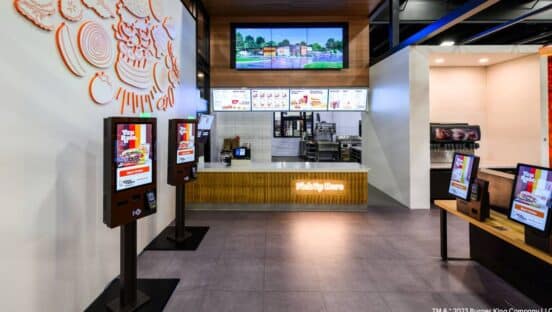While the majority of the restaurant industry is still trying to figure out how to leverage Google Glass to enhance operations, at least two limited-service operators have successfully used the new technology for training employees.
KFC, part of Yum! Brands, and Capriotti’s Sandwich Shop, a 104-unit chain based in Las Vegas, have tested Google Glass for training purposes. While the popular technology was previously only released to 8,000 users that Google selected via Twitter, Google recently offered Glass for sale for one day only.
KFC and Interapt, a mobile and wearable technology strategy firm, began working on a prototype Google Glass training program, Vision 2020, last November. Interapt executives initially filmed training tasks at KFC using Google Glass, then developed software and a Google Glass video that was used to train new KFC employees in a limited test.
“I went in as a guinea pig. I put Glass on myself, to see if I could learn how to make Original Recipe Chicken [and] learn the appliances and other tasks,” says Ankur Gopal, CEO of Interapt. “I learned to do an 80-page manual in one Google Glass video.”
Rob Lauber, vice president of Yum! University, writes in an email to QSR that Glass offers employees instant, hands-free retrieval of detailed tutorials whenever they needed reminders about tasks.
“We are always looking for ways to innovate our learning methods to drive more efficiency, consistency, and faster time performance,” Lauber says. “Our customers want quick service, and we need to make sure our people are capable of delivery on that expectation.”
Both Yum! University and Interapt deemed phase one of the program, which ended in March, a success.
“The advantages include immediate recall of key tasks, as well as potentially real-time support for our managers,” Lauber says. As a result, Yum! Brands executives are exploring how they can use Google Glass training across other brands. But Lauber says there are no other plans to announce at this time.
Capriotti’s use of Google Glass started on a smaller scale when Jason Smylie, the chain’s CIO and CMO, was selected as one of the original Google Glass Explorers via Twitter.
“My initial excitement was more personal, but then thought about how I could use this at work,” Smylie says. “I brainstormed with my team to figure out how we could use it in training, operations, and marketing.”
Capriotti’s executives realized that Glass’s best use, at least initially, was for training in the form of first-person videos. “We found that the most useful part is to record a lunch rush by the manager in training. Then, the manager in training can review it with his or her supervisors and see what they might do better,” Smylie says. “Glass gives us a unique perspective from the trainee’s perspective and allows us to review parts of the training we normally wouldn’t be able to.”
Another potential application for Glass at Capriotti’s is having an area manager film footage at multiple stores during daily or weekly visits, he adds. “Then all the mangers could come in one day and review the footage [and determine what improvements need to be made],” Smylie says.
Gopal also believes that manager training and communication is a great way to use Glass.
“More restaurants have been contacting us about things from training and quality assurance to operations and supporting multiple stores,” he says. “For example, a regional manager can communicate with all 50 stores in his region.”
Gopal adds that Glass would be useful for technical support, such as appliance repair. “Support can see exactly what you’re looking at [and give feedback],” he says.
As Glass software developers learn the needs of the foodservice industry, Smylie says, further applications for Glass will likely be developed. “Imagine if Glass could integrate with POS systems and sensors within the restaurant,” he says. “Imagine if there were thermometers and you got an alert in your Google Glass that something was above temperature, in real time.”
Interapt is talking with GE Appliances to determine ways to communicate temperature and time alerts between appliances and Glass.
While Google Glass is being used on a very limited basis for training, it is unclear how the technology might be used for consumer-facing initiatives. The major hurdle in utilizing Google Glass in marketing or at the front counter, operators say, is the consumer privacy stigma surrounding Glass. Many in the general population are concerned about being filmed by Google Glass wearers. As a result, a few restaurants and bars have publicly banned customers from wearing Glass in their establishments.
“I live in Las Vegas, so I can understand the ban in casinos [to prevent] cheating,” Smylie says. “However, I don’t get why everyday restaurants want to do that.”
Still, Capriotti’s is aware of consumers’ privacy concerns in relation to Glass, so it places a sign at the front door of the store when a manager is using Google Glass in the kitchen. “Our restaurants have open kitchens, so customers could be filmed incidentally. Our sign lets them know that we are using it, but it is for training purposes only,” Smylie says. “We have never had anyone bring up concerns.”
Another potential hang-up with using Glass is its cost and availability. Glass is not yet available on the commercial market, and when released will retail for around $1,500 each.
“If we continue to see value, it will be worthwhile to purchase more,” Smylie says. “Until they make it fully commercially available, I don’t think we plan additional purchases.”










